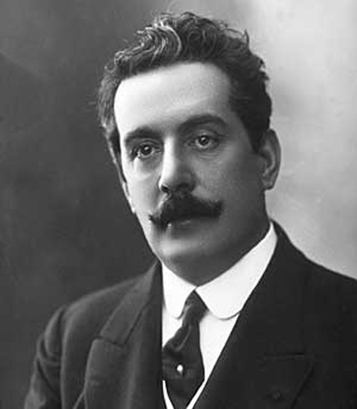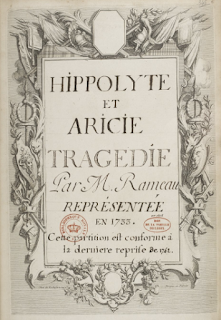Puccini - Madama Butterfly
Palais de la Monnaie, Brussels, Sunday February 12 2017.
Conductor: Bassem Akiki. Production: Kirsten Dehlholm (Hotel Pro Forma). Co-Director: Jon R. Skulberg. Sets: Maja Ziska. Costumes: Henrik Vibskov. Lighting: Jesper Kongshaug. Cio-Cio-San: Amanda Echalaz. Suzuki: Qiulin Zhang. Kate Pinkerton: Marta Beretta. F. B. Pinkerton: Leonardo Caimi. Sharpless: Aris Argiris. Goro: Riccardo Botta. Il Principe Yamadori: Aldo Heo. Lo zio Bonzo: Mikhail Kolelishvili. Il commisario / L’ufficiale: Wiard Witholt. Yakuside: René Laryea. Madre di Cio-Cio-San: Birgitte Bønding. Zia di Cio-Cio-San: Rosa Brandao. Cugina di Cio-Cio-San: Adrienne Visser. Puppeteers: Tim Hammer, Joris De Jong, Ruben Mardulier, Suze Van Miltenburg. La Monnaie Orchestra and Chorus.
It has struck me, thinking about yesterday’s Butterfly in Brussels, that there’s a big difference between “thought-provoking” productions and “puzzling” ones. Warlikowski’s productions are usually the former. Even if you don’t reach firm conclusions, the questions he raises are interesting and quite rewarding to think through. “Puzzling” productions are the ones where you just wonder why this and why that and what is the director getting at, and eventually, as I did with Paris’s recent Lohengrin, give up, not really caring much.
Like that Lohengrin, La Monnaie’s new Butterfly is puzzling. The central concept: Cio-Cio San “played” by a life-size Japanese puppet worked by three people in black and sung by her ghost to the side of the apron, at least avoids the risk of a mis-match between the teenage character and a mature-voiced soprano. But I wasn’t alone, far from it, in finding that our eyes are constantly drawn to the live singer and, therefore, away from anything else happening on stage: the expressionless puppet heroine and her fleshless interaction with the other characters.
The rest of the production failed, at least to me, to gel into a coherent whole. I found it more like a series of not-altogether-connected visual (more than dramatic) elements redolent of the design-school final-year project. Throughout, there was a wooden Japanese roof suspended over the stage and dark and moody coloured lighting instead of sets (during "Dolce notte, quante stelle", the sky was a starless rust brown). Sometimes there were large, rotating video screens showing only dimly-discernible images and, being very large, getting in the way. Jerky extras appeared several times, for no obvious reason, in origami-inspired, constructivist-looking costumes. In the first half, Pinkerton paced around in exaggeratedly long-toed shoes. Why? Sharpless was one-armed, his sleeve pinned back. Why? The bonze looked like an arctic explorer, all in white. The prince did his number against a large illuminated fan (“Designed by my concierge” said my neighbor. He liked the coloured paper streamers that fell down later better). What I took to be stagehands in black took up poses on the right to listen attentively to “Un bel di.”
[Aside: the opera was played in two parts. Part one ended with “Un bel di” and part two, like in a musical, started with a reprise of it, part a cappella, part sung with the orchestra as usual, part just orchestral.]
Other extras in black came on and mimed at various times, and carried the writhing, semi-abstract plum-tree branches, which also involved bobbing lights. The unfortunate son was represented by a rigid sort of doll, a Kewpie-doll of a bellboy, so it seemed, carried on and off. When the cannon went off, a hail of small, identical objects clattered comically from the sky to the stage. Video close-ups showed us they were dead robins. Two very large white discs were carried in, one from each side, and when held together became twin round screens giving us a binocular view, not of a warship, but a multi-storey cruise ship. At the very end, as the Butterfly puppet collapsed, “dead”, to the floor, a giant, inflatable version of the Kewpie-doll emerged from a hole in the floor and blew up to the full height of the stage, and that was it: lights out. A series of ideas or events, then, some of them inspired by Japan, others incomprehensible, but not really linked together and in some cases, as I said, just puzzling.
The emotion I imagine the puppet was meant to stir in fact came from soprano Amanda Echalaz, who in the end carried the show single-handed. I continue to think La Monnaie is now amplifying the sound to compensate for the acoustic failings of its temporary home in a tent. If this is not the case, then that’s how it sounds anyway. In the first half, I was reminded of some thick, heavy Soviet LPs, years ago, on which the sound was very nearly saturated. The voices were too close and too strident, cruelly exposed, but non-directional: you had to follow the story to know who was singing and there was no subtlety in the orchestra (which was not at its best yesterday).
In the second half, however, it was as if someone had noticed this and turned the volume down a notch, to a more natural level. Still, with no help whatsoever from the production and with or without his clownish shoes, Leonardo Caimi projected, according to my neighbor, “all the charisma of a mollusc” and maybe that was what hampered his singing: he didn’t sound comfortable or secure at the top, though I see he’s already singing Mario and Calaf, and with good reviews. It was, as I just said, Amanda Echalaz who drew your eyes away from the oddities and puzzlements of the production and, after a shrill-sounding first half, in the second, firm and full and moving, carried the show.
Maestro Wenarto and friend do "Dolce notte". N.B. watch right to the end to hear Cio-Cio San lose her virginity in the wings.
Conductor: Bassem Akiki. Production: Kirsten Dehlholm (Hotel Pro Forma). Co-Director: Jon R. Skulberg. Sets: Maja Ziska. Costumes: Henrik Vibskov. Lighting: Jesper Kongshaug. Cio-Cio-San: Amanda Echalaz. Suzuki: Qiulin Zhang. Kate Pinkerton: Marta Beretta. F. B. Pinkerton: Leonardo Caimi. Sharpless: Aris Argiris. Goro: Riccardo Botta. Il Principe Yamadori: Aldo Heo. Lo zio Bonzo: Mikhail Kolelishvili. Il commisario / L’ufficiale: Wiard Witholt. Yakuside: René Laryea. Madre di Cio-Cio-San: Birgitte Bønding. Zia di Cio-Cio-San: Rosa Brandao. Cugina di Cio-Cio-San: Adrienne Visser. Puppeteers: Tim Hammer, Joris De Jong, Ruben Mardulier, Suze Van Miltenburg. La Monnaie Orchestra and Chorus.
 |
| Puccini |
Like that Lohengrin, La Monnaie’s new Butterfly is puzzling. The central concept: Cio-Cio San “played” by a life-size Japanese puppet worked by three people in black and sung by her ghost to the side of the apron, at least avoids the risk of a mis-match between the teenage character and a mature-voiced soprano. But I wasn’t alone, far from it, in finding that our eyes are constantly drawn to the live singer and, therefore, away from anything else happening on stage: the expressionless puppet heroine and her fleshless interaction with the other characters.
The rest of the production failed, at least to me, to gel into a coherent whole. I found it more like a series of not-altogether-connected visual (more than dramatic) elements redolent of the design-school final-year project. Throughout, there was a wooden Japanese roof suspended over the stage and dark and moody coloured lighting instead of sets (during "Dolce notte, quante stelle", the sky was a starless rust brown). Sometimes there were large, rotating video screens showing only dimly-discernible images and, being very large, getting in the way. Jerky extras appeared several times, for no obvious reason, in origami-inspired, constructivist-looking costumes. In the first half, Pinkerton paced around in exaggeratedly long-toed shoes. Why? Sharpless was one-armed, his sleeve pinned back. Why? The bonze looked like an arctic explorer, all in white. The prince did his number against a large illuminated fan (“Designed by my concierge” said my neighbor. He liked the coloured paper streamers that fell down later better). What I took to be stagehands in black took up poses on the right to listen attentively to “Un bel di.”
[Aside: the opera was played in two parts. Part one ended with “Un bel di” and part two, like in a musical, started with a reprise of it, part a cappella, part sung with the orchestra as usual, part just orchestral.]
Other extras in black came on and mimed at various times, and carried the writhing, semi-abstract plum-tree branches, which also involved bobbing lights. The unfortunate son was represented by a rigid sort of doll, a Kewpie-doll of a bellboy, so it seemed, carried on and off. When the cannon went off, a hail of small, identical objects clattered comically from the sky to the stage. Video close-ups showed us they were dead robins. Two very large white discs were carried in, one from each side, and when held together became twin round screens giving us a binocular view, not of a warship, but a multi-storey cruise ship. At the very end, as the Butterfly puppet collapsed, “dead”, to the floor, a giant, inflatable version of the Kewpie-doll emerged from a hole in the floor and blew up to the full height of the stage, and that was it: lights out. A series of ideas or events, then, some of them inspired by Japan, others incomprehensible, but not really linked together and in some cases, as I said, just puzzling.
The emotion I imagine the puppet was meant to stir in fact came from soprano Amanda Echalaz, who in the end carried the show single-handed. I continue to think La Monnaie is now amplifying the sound to compensate for the acoustic failings of its temporary home in a tent. If this is not the case, then that’s how it sounds anyway. In the first half, I was reminded of some thick, heavy Soviet LPs, years ago, on which the sound was very nearly saturated. The voices were too close and too strident, cruelly exposed, but non-directional: you had to follow the story to know who was singing and there was no subtlety in the orchestra (which was not at its best yesterday).
In the second half, however, it was as if someone had noticed this and turned the volume down a notch, to a more natural level. Still, with no help whatsoever from the production and with or without his clownish shoes, Leonardo Caimi projected, according to my neighbor, “all the charisma of a mollusc” and maybe that was what hampered his singing: he didn’t sound comfortable or secure at the top, though I see he’s already singing Mario and Calaf, and with good reviews. It was, as I just said, Amanda Echalaz who drew your eyes away from the oddities and puzzlements of the production and, after a shrill-sounding first half, in the second, firm and full and moving, carried the show.
Maestro Wenarto and friend do "Dolce notte". N.B. watch right to the end to hear Cio-Cio San lose her virginity in the wings.




Comments
Post a Comment